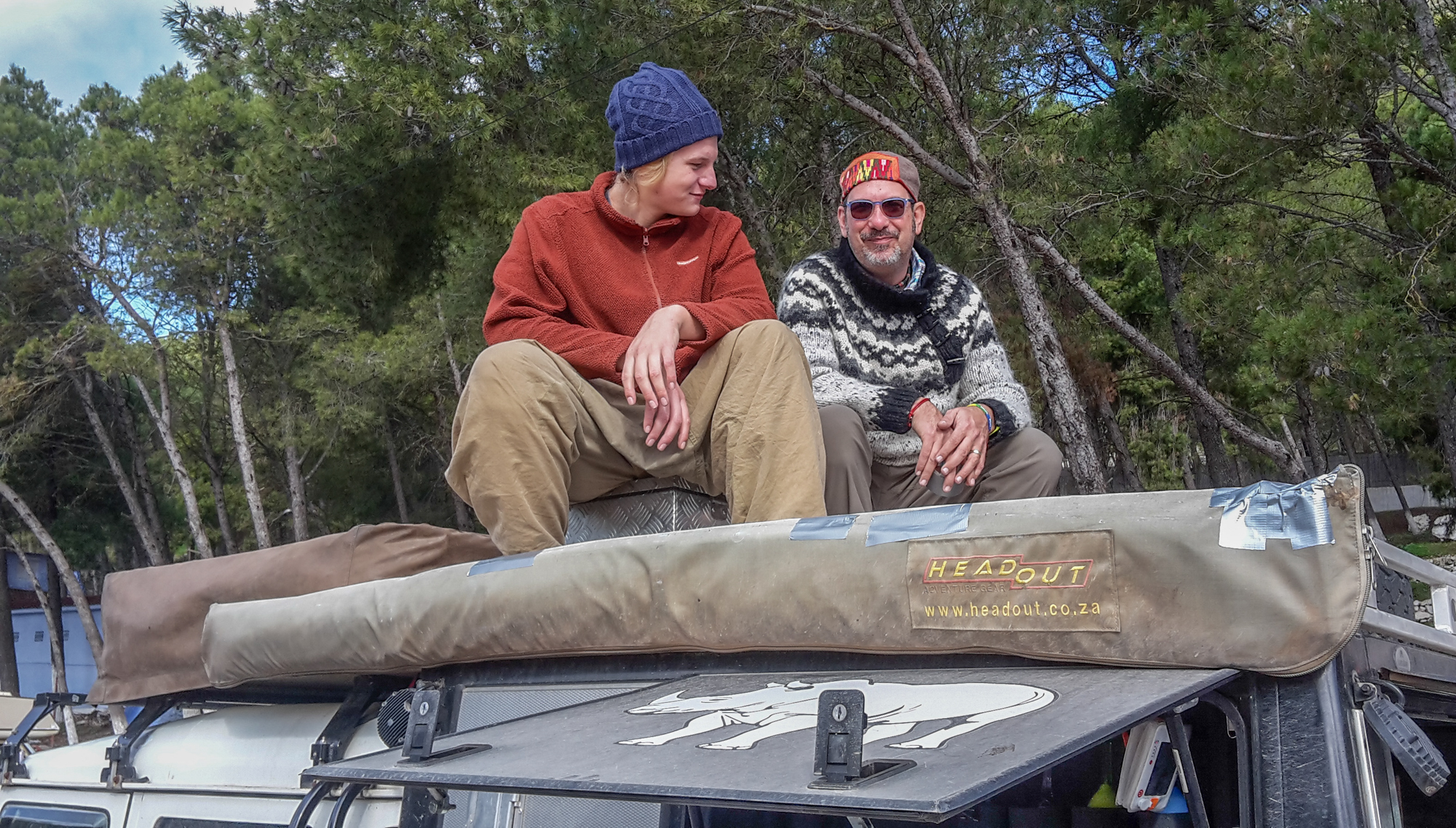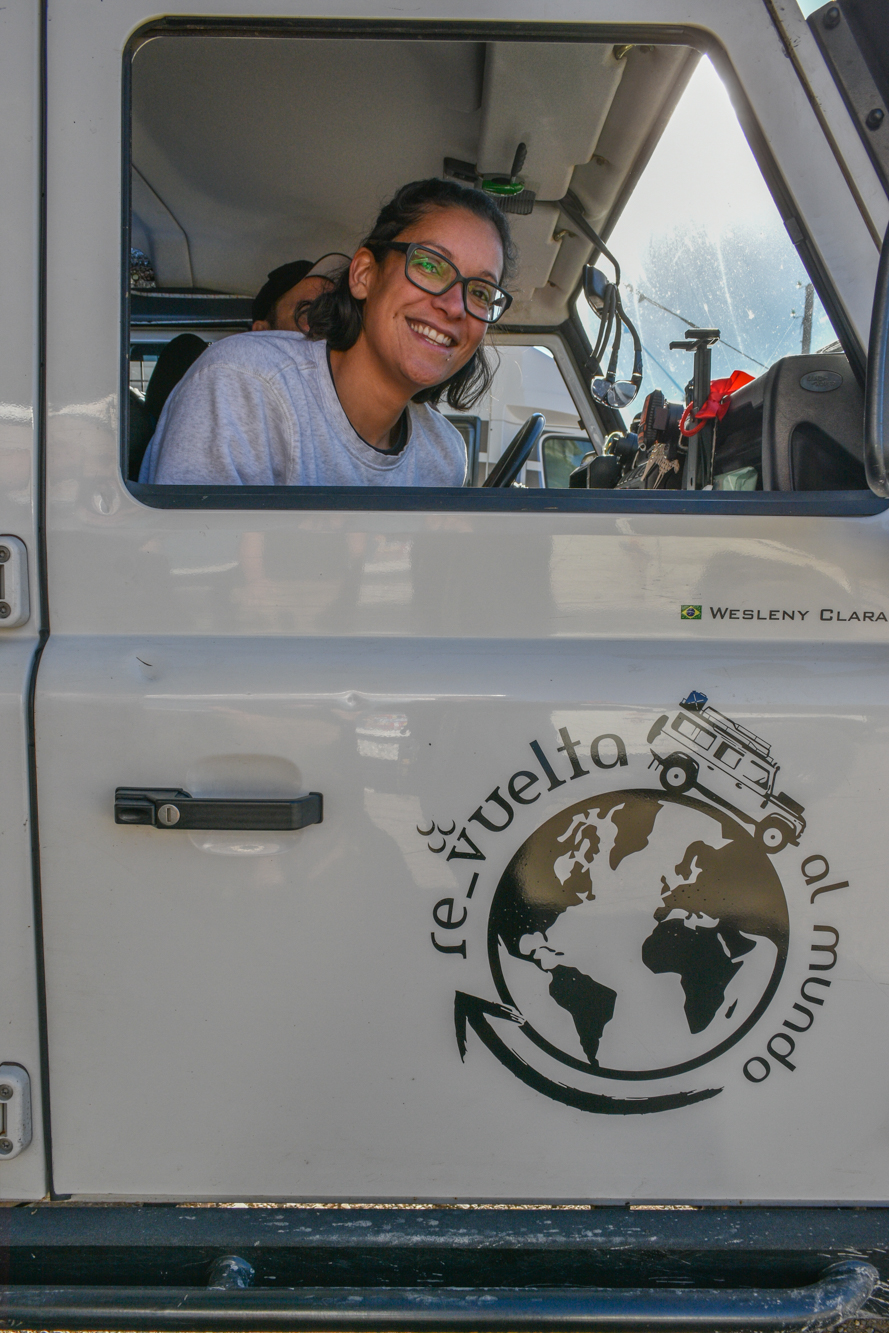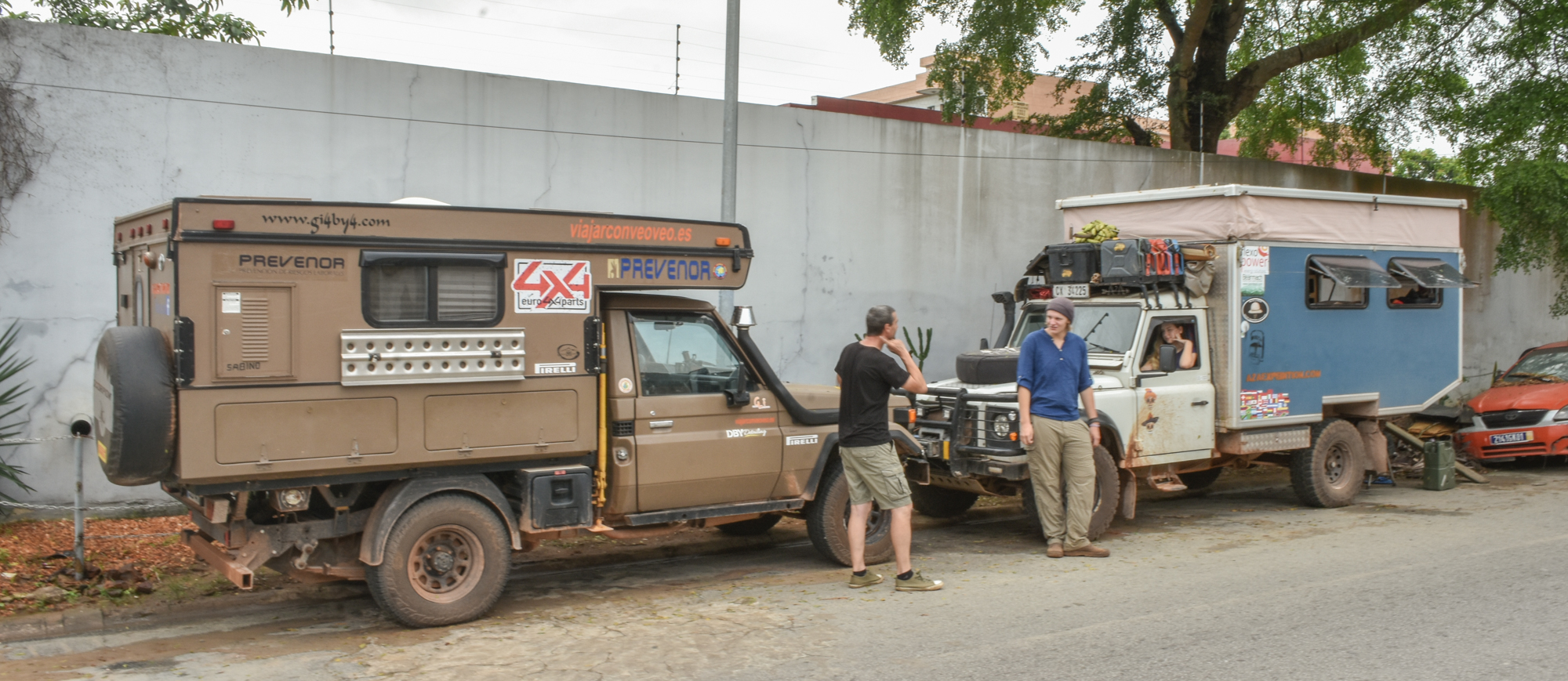“Begin er niet aan, dit is verslaavend (Do not start, it is addictive).” –taken from a sticker given to me by a Dutch overlander
Recently I wrote a short letter to my friend Dr. Rosselli seeking clarification. Dr. Rosselli is an internationally renowned Colombian neurologist, and himself an overlander who primarily travels unknown and dangerous corners of South America in an old Land Rover Series 3. We had met years before in Bogota, and I knew if anyone could help me understand my “condition,” Diego was the man for the job. The letter read as follows:
Hello old friend, I hope you are well.
I am busy writing my fourth book and need to consult you to flesh out an idea that I have and perhaps find some peace of mind.
I am wondering if the following behaviour is psychological or neurological (i.e., a chemical imbalance) and perhaps you may have some personal experience?
My problem is that when we are on the road in our Land Rover, I am satisfied, no matter how difficult the road may be. But when we stop for a few days or more in a normal home and settle into a routine, I experience an insatiable craving (for lack of a better word) which nothing can satisfy. Not food or drink or any other stimulant can permanently quench the craving.
When we pack the Land Rover to continue our journey, I initially experience a degree of anxiety. But by the end of the day, both the anxiety and craving are completely gone, and I am satisfied.
Could this be caused by the release of a chemical in the brain, or is the satisfaction psychological?
I fear that I may be “addicted” to overland travel. There are worse things to be addicted to.
Thank you so much.
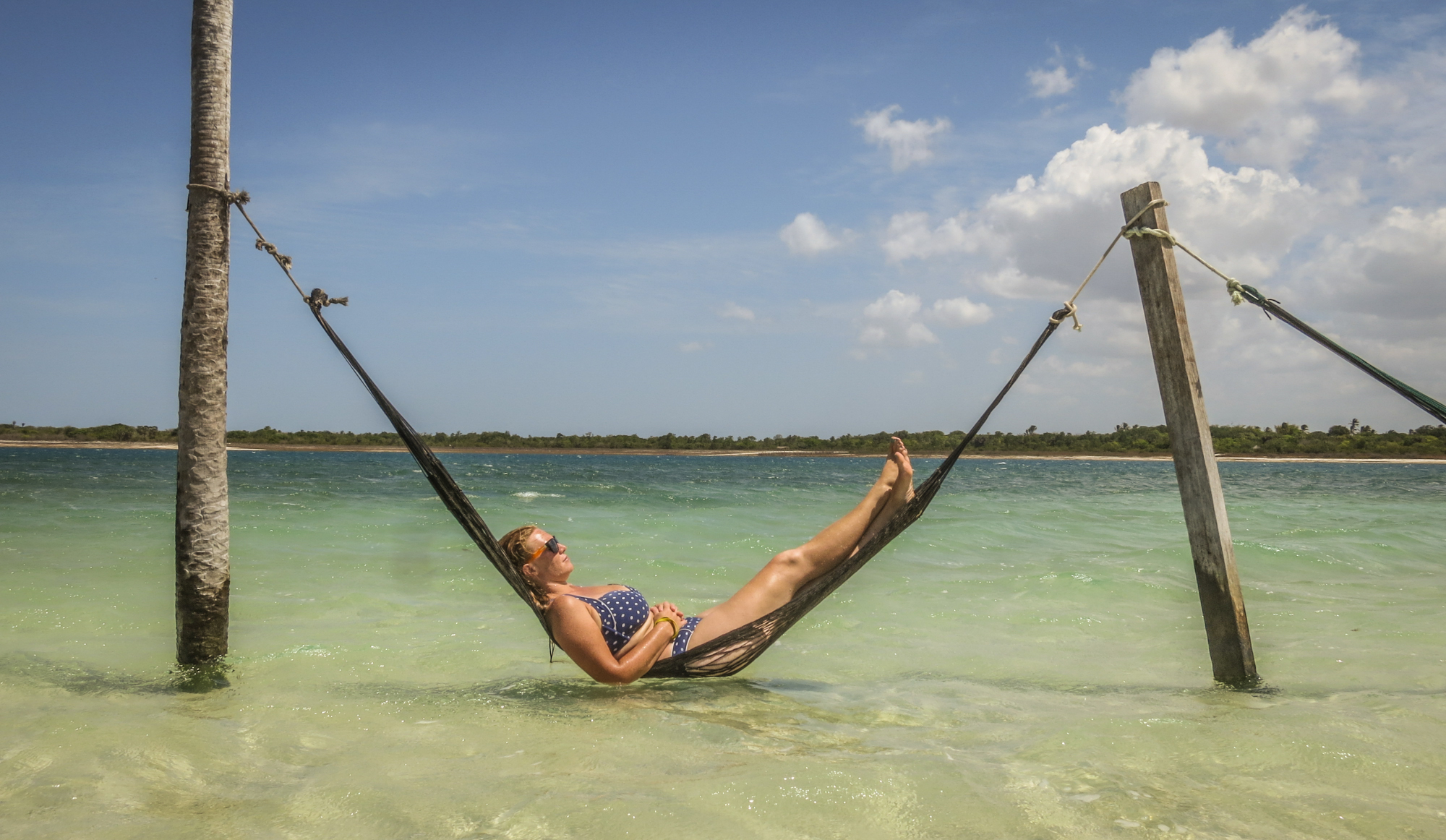
Dr. Rosselli recruited his mother, a fellow esteemed neurologist, and they asked a few questions. “Would I get your consent to publish your case in a psychiatric journal?” Mrs. Rosselli then asked if I have nomadic ancestors as the Rosselli family does. I suspect they understand my “condition” on a personal level.
To help better understand my disease, I have analyzed my lifestyle and that of other known addicts and have compiled the following list of behaviours which typifies the addiction:
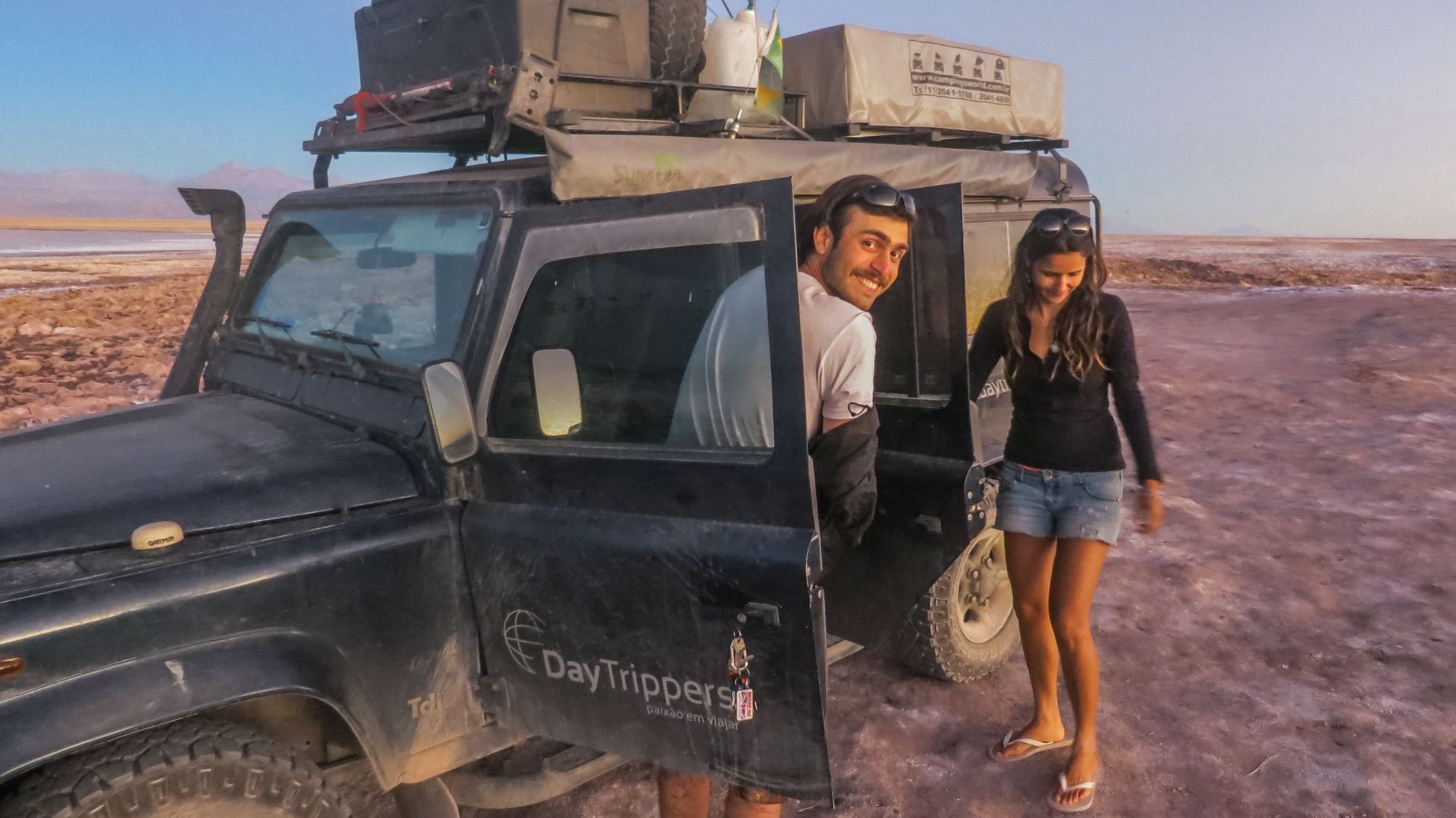
Euphoria
Like a surfer in a barrel, an addict on the road with the wind blowing through their hair and plans for a campfire and cold drink will exhibit gleeful behaviour: singing, joking, and laughing often. Even when the vehicle breaks down and they are covered in oil and grease, the addict will continue to smile, saying things like “Rather to be broken down beside the road than stuck in an office,” and “It could be worse, we could be having dinner with your family.” The overlander may often slip into long periods of content silence, staring at the road ahead, saying nothing but smiling like a simpleton. (I suspect that overlanding releases chemicals such as dopamine and adrenaline which create a sense of profound satisfaction and well-being.)
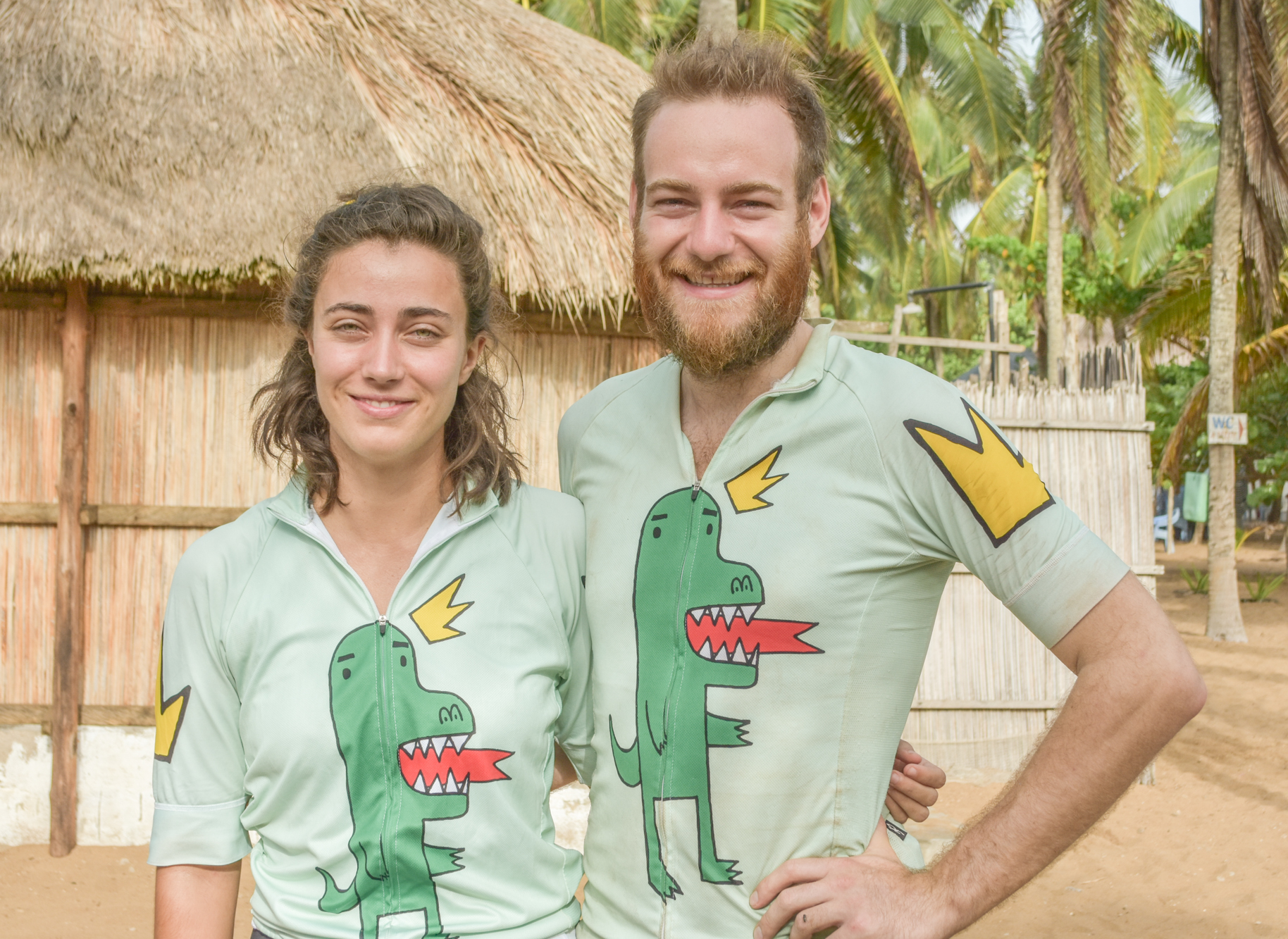
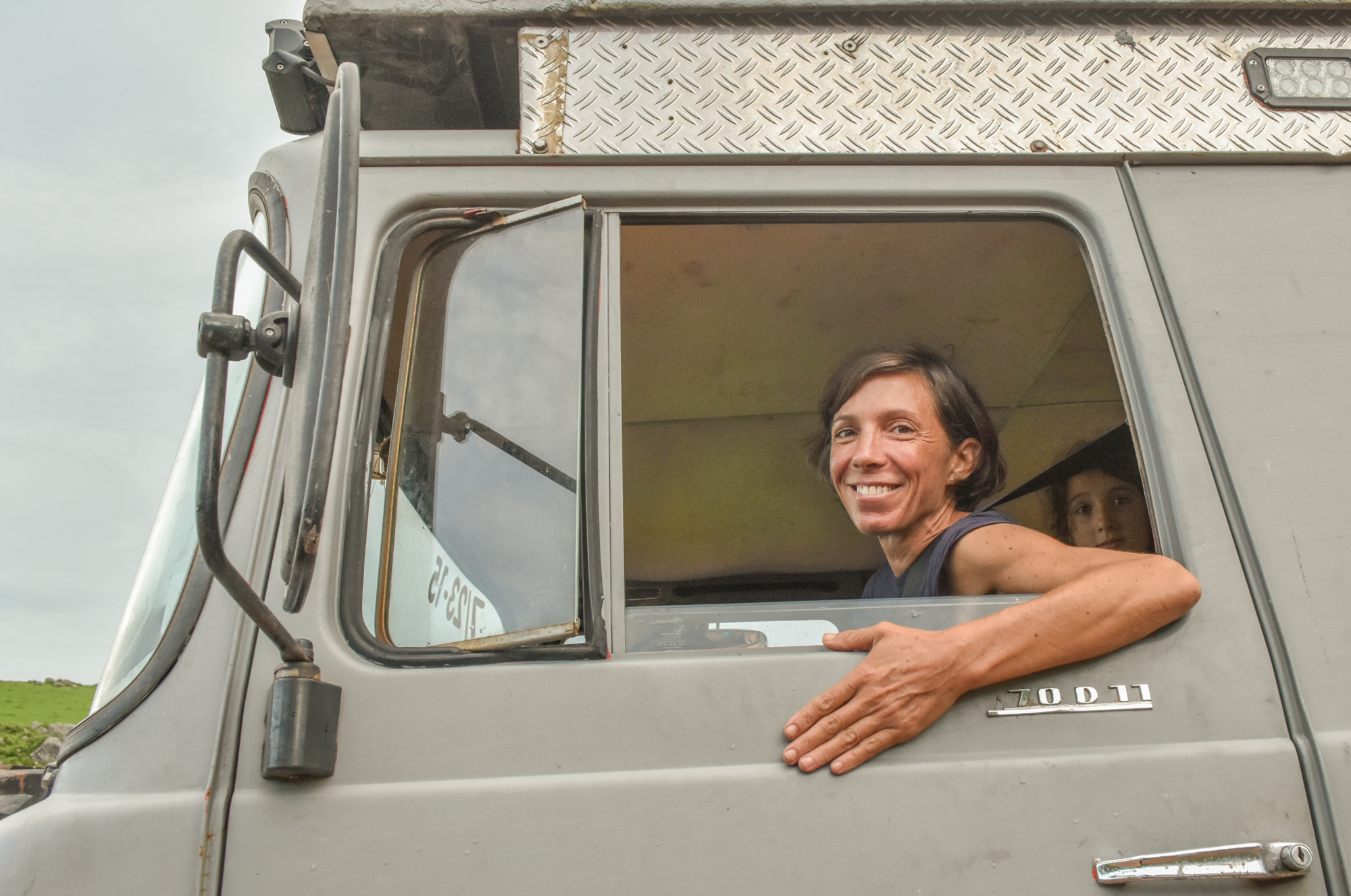
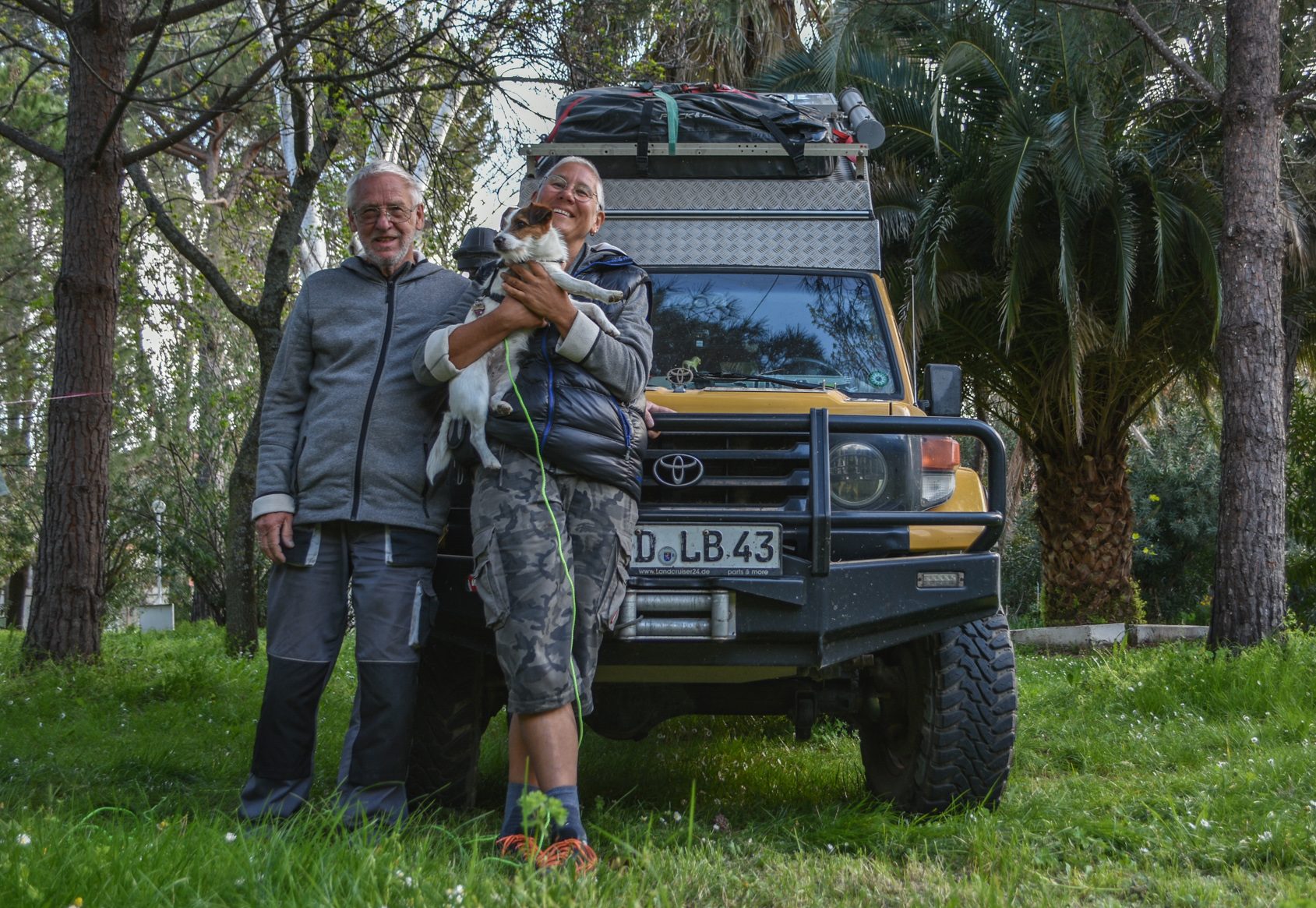

The Sadness
To quote Laird Hamilton’s wife in Riding Giants, “Without giant waves to surf, he is like a dragon slayer with no dragons to slay.” The greatest sufferers of The Sadness are former long-term international overlanders who are now forced by the real world to become wage slaves once again. You will recognize The Sadness when you see it (or feel it yourself), and all one needs to do is attend an overland gathering to witness it firsthand. Usually, a couple suffering from The Sadness will tell travel stories at the campfire all night and the next day mope together around their perfectly restored/prepared/rebuilt rig, counting the seconds until they can drive farther than the nearest border. The only known treatment for The Sadness is a six-month, long-distance overland journey, and even then the treatment only treats the symptoms, not the cause. The Sadness has also been known to infect those who do not ever see the opportunity to travel the planet overland but desire nothing else (rest assured, there is always a way, you just have to want it enough).
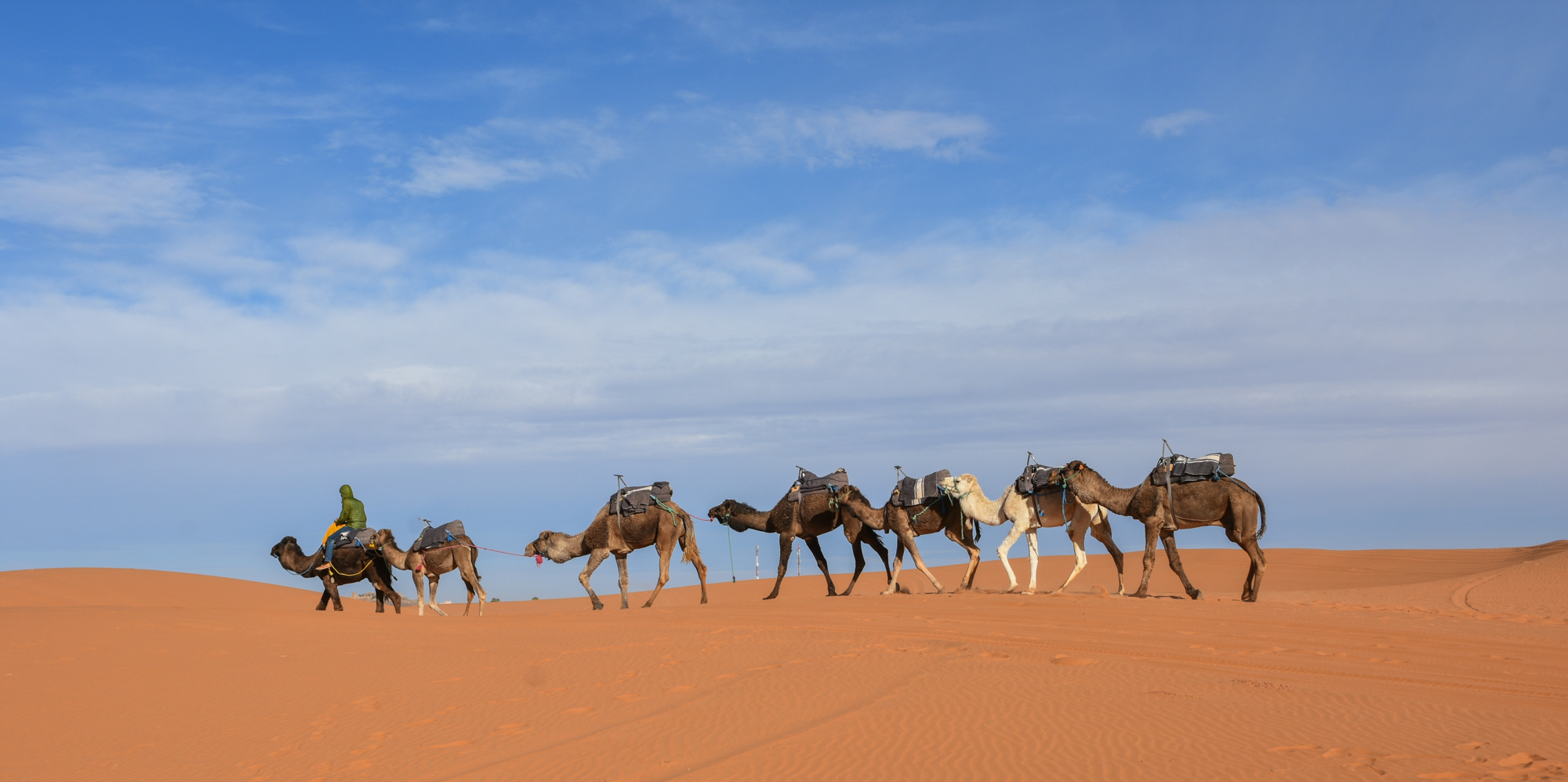
Irritability, Mood Swings, and Irrational Behaviour
An addict, deprived of the distraction and satisfaction which overlanding affords will be almost impossible to live with. One second, high (thinking about the road), the next second, low (thinking about not being on the road), the addict is not bipolar or schizophrenic, they are simply not in their natural environment. “Caged like a beast of the wild,” might be a phrase which they mutter often. For the sake of a marriage or relationship, partners are advised to seek regular opportunities for relief (i.e., a weekend in the mountains).
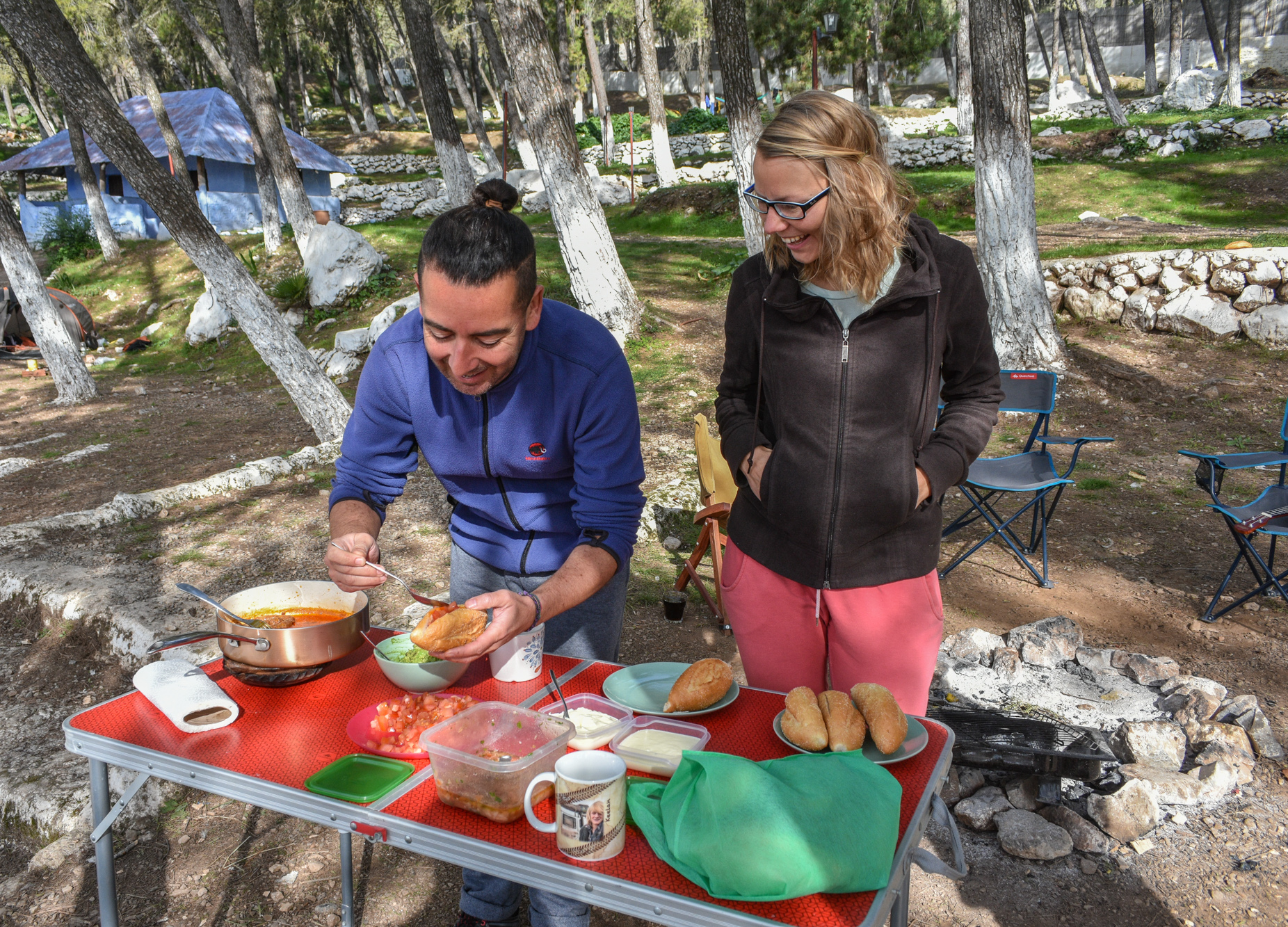
Substance Abuse and Pyromania
The addict may seek to alleviate the symptoms of addiction by making campfires on a Tuesday night while drinking a few beers, insisting that he or she will be cooking in the garden from now on. This is perfectly normal behaviour for a sufferer in the advanced stages of addiction.
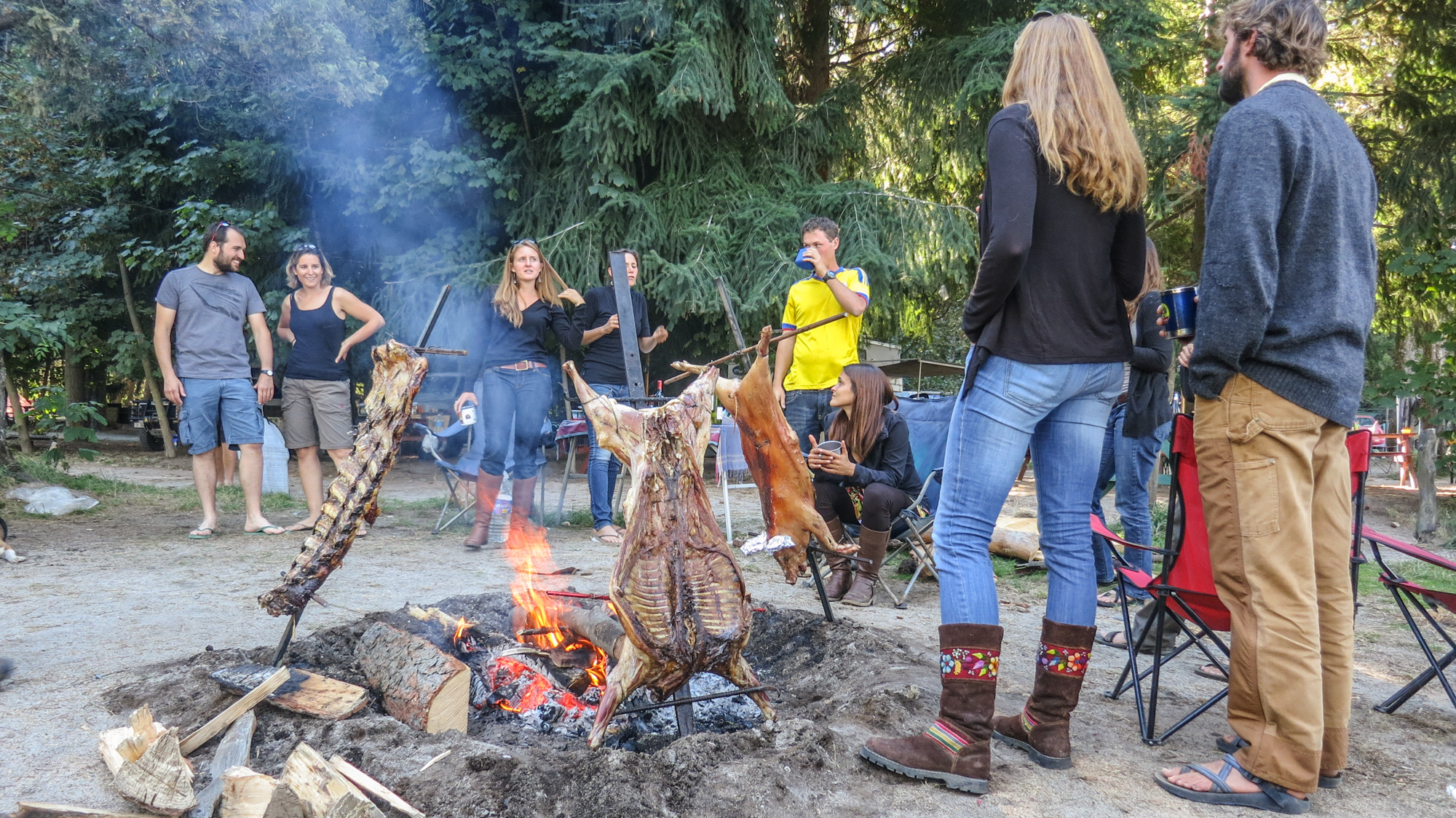
Improper Behaviour Online (note that not all addicts exhibit this behaviour)
Before overlanding, the addict was meek and mild and a pleasure to follow and interact with. After an international overland journey, they become “experts” online, obsessed with, but not limited to, the following topics:
– Tire sizes
– Free camping versus wild camping
– Navigation
– Strategies for saving money while on the road
– Shipping routes, RORO versus container
– Mocking vehicle modifications of any sort other than those which the addict implemented on his vehicle
– 2WD versus 4WD
– The “perfect” overland rig
In addition to the above, the sufferer will scour the internet constantly seeking overlanders to follow or hate, for bargain overland vehicles, tools, and a set of Michelin XZLs.
Financial Parsimony (stinginess)
The addict might once have been generous. They paid for dinners at restaurants, had hobbies, occasionally took beach holidays (in an actual hotel), and bought their partners lovely, useless, romantic gifts for their birthday and Christmas. Now that person spends money on nothing at all, unless that something is overland related. Their house has slowly but surely emptied of furniture and electronics (there is no more evident sign of an addiction). The flat screen and Xbox have been traded for a Panasonic Toughbook, the lounge suite for an upgraded suspension, the dining room set and silver for a solar system with split charger and lithium battery. On a partner’s birthday, the addict gives them a new set of tires, and for Christmas, they are blessed by a khaki-clad Santa with a Snomaster fridge. When the in-laws visit, they sit on camping chairs in the lounge while the addict is burning meat in the garden, later informing them of plans to “downsize” from the double-story house to a “cute little shipping container.” The addict will undergo a vasectomy or hysterectomy to ensure that no little expensive, game-changing rug rats will surprise them nine months after Valentine’s Day and ruin everything.
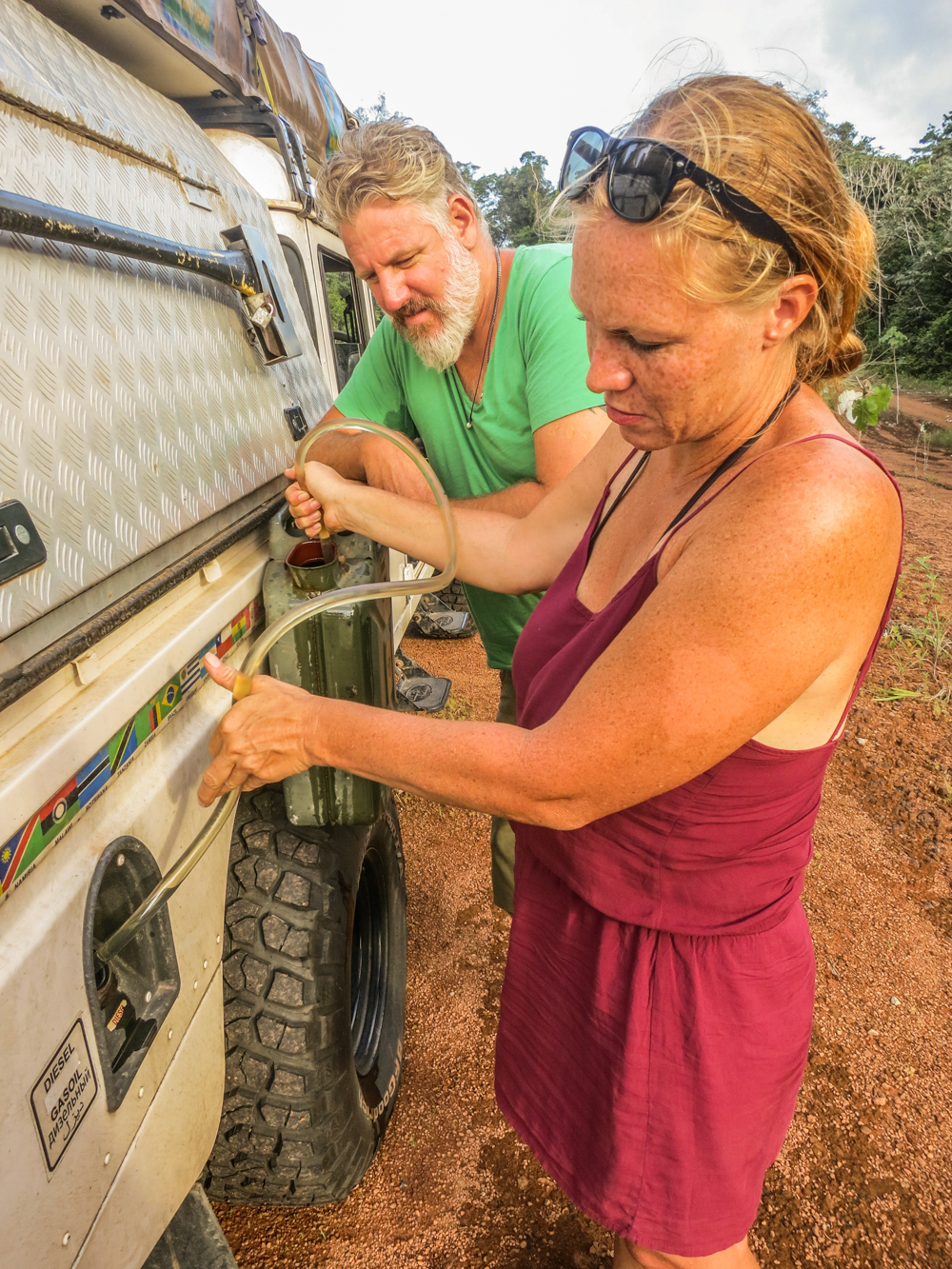
Questionable Personal Hygiene
The addict showers less than they should, brushes their teeth outside, wear flip-flops when they do shower, and only change their clothing once a week. A quick armpit sniff is followed by the innocuous but troubling statement “Yeah, I’m good for another two days.” Fingernails are kept extremely short but toenails ignored. Hair is either grown to flow or shaved short weekly. Deodorant is reserved for special occasions, and previously clean-shaven, respectable men now wear unbrushed beards. Women who once wore only the latest fashions now wear khaki cargo pants, leather missionary-style sandals, and Overland the Americas T-shirts.
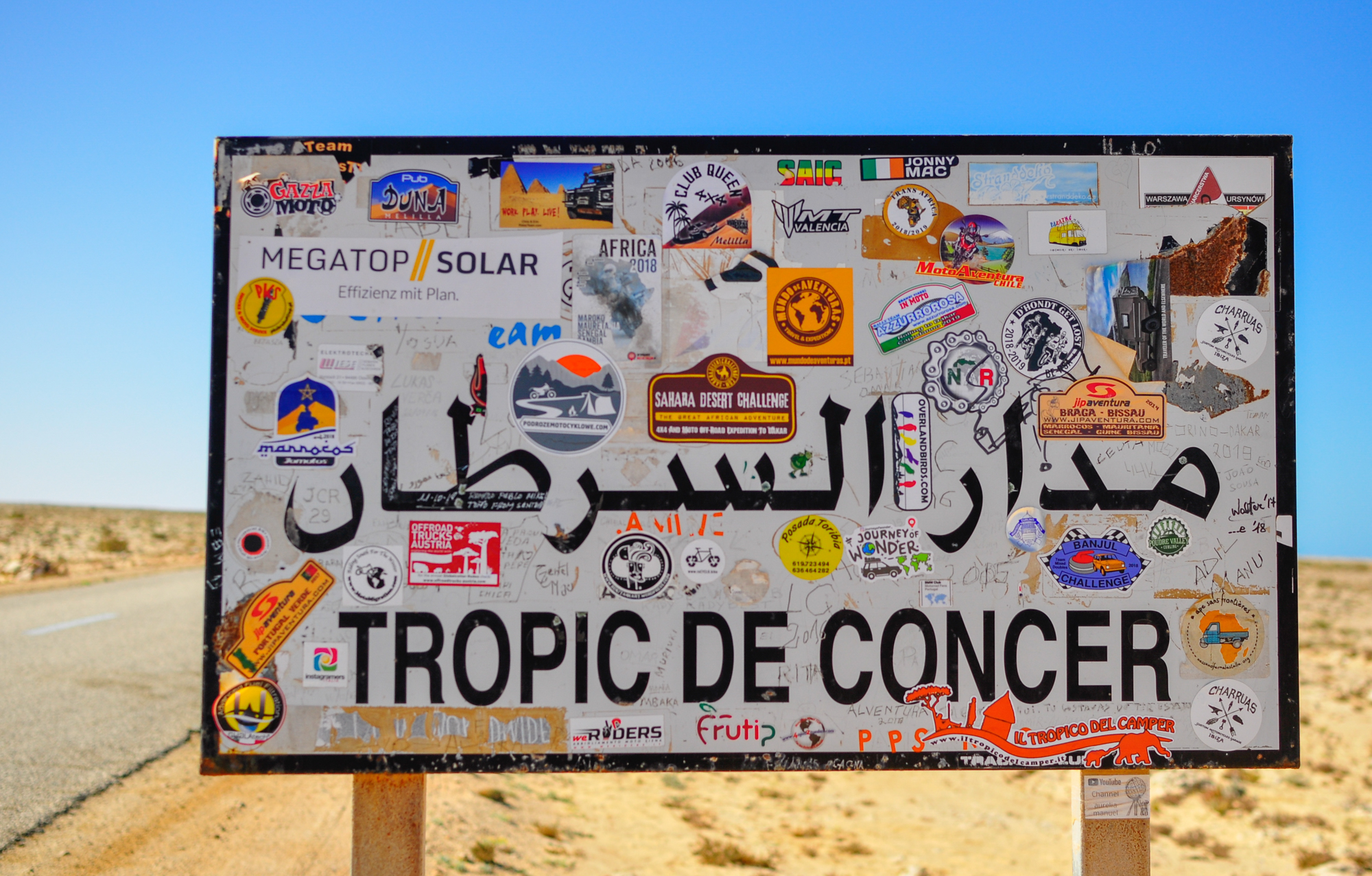
Treatment Strategies
While there is no known cure for overland addiction, the available treatment is relatively inexpensive (or incredibly expensive) and effective. It is worth mentioning that a sufferer will not suffer any physical deterioration as a direct result of their addiction. In fact, they will be healthier than most non-sufferers as they breath more fresh air, are more physically active, and suffer lower levels of stress as they pursue a minimalistic lifestyle.
We recommend the following:
– Bi-monthly overland camping trips (They do not have to travel far, they just need to travel.)
– Subscribe to Overland Journal and Expedition Portal and read my books.
– Relocate to Utah or Arizona (or Spain if you are European).
– Fly and drive. Drive the rig to somewhere awesome, leave it there, fly home, source cash, and return to the rig to continue when possible. You can travel the planet overland.
If all else fails:
– Save every cent, sell everything, and hit the road. The sum of $2,000 a month is more than enough for a couple to live comfortably while overlanding the planet. We know people who survive on $500 a month.
By the way, the latest message I received from Dr. Rosselli reads:
“It sure is an addiction. This weekend, I drove 600 kilometres of rough terrain in some of the most infamous areas of Colombia—areas with a record of massacres, people forcibly disappeared and displaced. Why did I go there? Who knows.”
Do not start, it is addictive. You have been warned.

